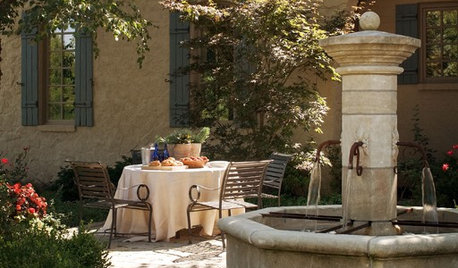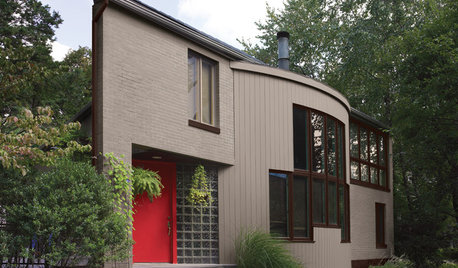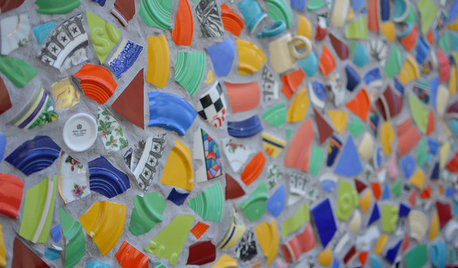Should I taste my fermented shellies, or wait a bit?
NilaJones
10 years ago
Related Stories

MY HOUZZMy Houzz: Portland Home Renovation Worth the 15-Year Wait
Open spaces, natural light and valley views take center stage in this couple’s modern refresh
Full Story
DECORATING GUIDESBring a Taste of Italy Home With 12 Design Touches
No vacation plans abroad? You can still get the feel of old-world Italy with these ideas from an Italian designer
Full Story
TASTEMAKERSPro Chefs Dish on Kitchens: Michael Symon Shares His Tastes
What does an Iron Chef go for in kitchen layout, appliances and lighting? Find out here
Full Story
GROUND COVERSGive Your Lawn a Taste of the Wild
Consider the joys of an irregularly trimmed meadow lawn: It’s ecofriendly, visually interesting and still good for romping
Full Story
LIFEWhen Decorating Styles Collide: Practical Ways to Merge Tastes
You moon over modern but he's taken with traditional? Here's how to get an interior design you'll both agree is stunning
Full Story
HOUZZ TOURSMy Houzz: Goodwill and Good Taste in a Grand Colonial
Welcoming the community for charity fundraisers and more, this Massachusetts home radiates graciousness
Full Story
LIFEWhen Your Tastes Clash: How to Design and Decorate as a Couple
Want to keep the peace? Work with both of your styles when remodeling, decorating or building new, for a home that feels right to all
Full Story
EXTERIOR COLORExterior Color of the Week: Tasteful Taupe
When you want to skip the peachy beiges and ubiquitous creams, consider this rich cool brown neutral instead
Full Story
DECORATING GUIDESMosaic Tile Designs That’ll Thrill You to Bits
Whether you go for simple stones or imaginative expressions, a mosaic can turn any surface into a work of art
Full Story
DECORATING GUIDESTransitional Style: A Bit of Modern and Traditional
Balance Old and New With a Mix of Simple Lines, Neutrals, Warmth and Light
Full Story





digdirt2
NilaJonesOriginal Author
Related Professionals
Beavercreek Landscape Architects & Landscape Designers · Simi Valley Landscape Architects & Landscape Designers · Southfield Landscape Architects & Landscape Designers · Edmond Landscape Contractors · Emmaus Landscape Contractors · Hicksville Landscape Contractors · Lynwood Landscape Contractors · Muttontown Landscape Contractors · Pleasanton Landscape Contractors · West Coon Rapids Landscape Contractors · Winchester Landscape Contractors · Suisun City Landscape Contractors · Cincinnati Roofing & Gutters · Discovery Bay Roofing & Gutters · Mounds View Roofing & Guttersdigdirt2
NilaJonesOriginal Author
digdirt2
NilaJonesOriginal Author
NilaJonesOriginal Author